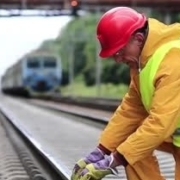How to Gather Evidence for a Successful FELA Claim
Working on the railroad involves navigating a uniquely hazardous environment each day. From operating heavy machinery and managing dangerous goods to withstanding severe weather conditions, the risks associated with this industry are numerous. The work environment becomes even more complex given the round-the-clock operation of railroads, which means the workers are frequently subjected to long, irregular hours. Under such demanding conditions, accidents and subsequent injuries are all too common, underscoring the significance of stringent safety measures and regulations.
Unlike most industries where workers’ compensation laws apply, the railroad industry operates under the Federal Employers’ Liability Act (FELA). FELA was enacted to provide a legal avenue for injured railroad workers to claim compensation. Unlike the more straightforward, no-fault system of workers’ compensation where employees automatically receive compensation for work-related injuries, FELA requires more from the injured worker. It demands that they establish, at least in part, that their injury resulted from the negligence of the railroad employer or another employee.
As such, making a successful FELA claim requires strong detailed evidence to demonstrate that negligence played a role in the incident. Gathering this evidence can be challenging, given the technical and specialized nature of railroad work, yet it is crucial to secure full and fair compensation.
Understanding FELA and Its Implications
The Federal Employers’ Liability Act (FELA), enacted by Congress in 1908, is a piece of legislation specifically designed to protect the rights of railroad workers in the United States. It was introduced in response to the unique and often hazardous conditions these workers face daily, leading to an alarmingly high rate of injuries. FELA provides a pathway for injured railroad employees to seek compensation for their injuries.
FELA operates under the legal principle of comparative negligence, meaning the compensation an injured worker receives will be proportionate to the degree of fault attributed to the worker’s employer. Thus, under FELA, a worker can seek compensation even if they are partially at fault for their injury, but the amount of compensation received will be reduced by the percentage of their fault.
To successfully secure compensation under FELA, an injured railroad worker must establish that their injury occurred in the course of their employment and that the railroad employer, another employee, or a faulty piece of equipment was negligent in causing or contributing to the injury. This can cover a broad range of circumstances, from accidents caused by inadequate safety equipment or poorly maintained machinery to injuries resulting from inadequate training or unsafe work practices.
The Types of Evidence Used to File a Successful FELA Claim
Different types of evidence can be used to substantiate a FELA claim, and collecting a broad range of evidence can help to create a more comprehensive and compelling case.
Physical Evidence
Physical evidence can be the most tangible and convincing proof of negligence or hazardous conditions. This can include photographs or video footage of the accident scene, the machinery or equipment involved, and any visible injuries. If there were hazardous conditions present or malfunctioning equipment, photographs can depict this clearly. Also, if there were changes in the scene or condition of equipment post-accident, photos taken immediately can help establish the original state.
Physical evidence might also encompass faulty equipment or other objects directly related to the injury. Retaining such items, when possible, can provide concrete proof of faulty machinery or tools contributing to the accident.
Documented Evidence
Various documents can be instrumental in a FELA claim. This can start with medical records that provide detailed information about the nature and extent of your injuries, the required treatments, and the prognosis for recovery. These records play a crucial role in establishing the seriousness of your injury and its impact on your life. They also contribute to the calculation of damages related to medical expenses and potential future care needs.
Additionally, accident reports, safety inspection records, maintenance logs, work schedules, and other employment records can be invaluable. These documents can indicate a pattern of negligence or unsafe work practices and may help establish that the employer was aware, or should have been aware, of potential hazards. Such records can provide a timeline of events, establish context, and highlight any discrepancies or neglect of safety procedures on the employer’s part.
Witness Testimonies
Statements from coworkers, bystanders, or anyone who witnessed the accident can provide critical evidence. Witnesses can substantiate the circumstances of the accident, corroborate your account of the event, and provide additional context. This human element can be incredibly persuasive to a jury, as it brings the facts to life. Furthermore, eyewitnesses may also provide insight into the daily operations, safety protocols (or lack thereof), and overall working conditions, offering a more comprehensive view of the railroad work environment.
Expert Testimonies
While not always necessary, expert opinions can be valuable in certain complex cases. For instance, a medical expert can provide a thorough explanation of your injuries, the necessary treatments, the impact on your life and work, and the potential for future medical issues. Their testimony can help ensure the full extent of your injuries is understood and adequately valued. An industry expert, on the other hand, can testify on standard safety practices in the railroad industry and whether they were violated in your case. Such an expert can offer an objective view of the professional standards and expectations within the industry, lending weight to allegations of negligence.
Building a Strong FELA Claim with the Right Evidence
The process of gathering evidence is just the first step in building a successful FELA claim. How you organize and present that evidence can significantly impact its effectiveness in proving your case.
Organize Methodically
Systematically organize your evidence in a way that best tells the story of your accident and injury. This could be chronological, arranging evidence in the order events occurred. Alternatively, you might group evidence by type or by the element of your claim it supports. The key is to make it easy for others to understand the sequence of events and the connection between the evidence and your claim.
Highlight Key Pieces of Evidence
Not all evidence holds the same weight. Identify the most compelling pieces of evidence and ensure they stand out in your presentation. This might be a graphic photo of the accident scene, a particularly damning document, or a powerful eyewitness account.
Use Visual Aids
When presenting your evidence, consider using visual aids to make complex information more accessible and impactful. This could be photographs, diagrams, timelines, or infographics. These aids can make it easier to understand the circumstances surrounding the accident and the extent of your injuries.
Connect the Dots
Don’t assume that the significance of each piece of evidence will be obvious to others. Be explicit in linking each piece of evidence to your claim. This might involve explaining how a specific piece of evidence demonstrates negligence, contributes to an understanding of your injuries, or highlights the impact of the accident on your life.
Importance of Legal Expertise in Presenting a Strong FELA Case
A successful FELA claim often requires more than just the accumulation of evidence. You also need to understand how to present that evidence effectively, which is where legal expertise comes into play. An attorney with experience in FELA claims can provide invaluable assistance in this regard.
An experienced FELA attorney will know what kind of evidence carries the most weight in these types of cases and how to gather it. They will also understand the nuances of the FELA legislation and how it applies to your specific situation. Your attorney can help determine the best strategy for organizing and presenting your evidence, highlighting key points, and ensuring that your full story is told.








Leave a Reply
Want to join the discussion?Feel free to contribute!